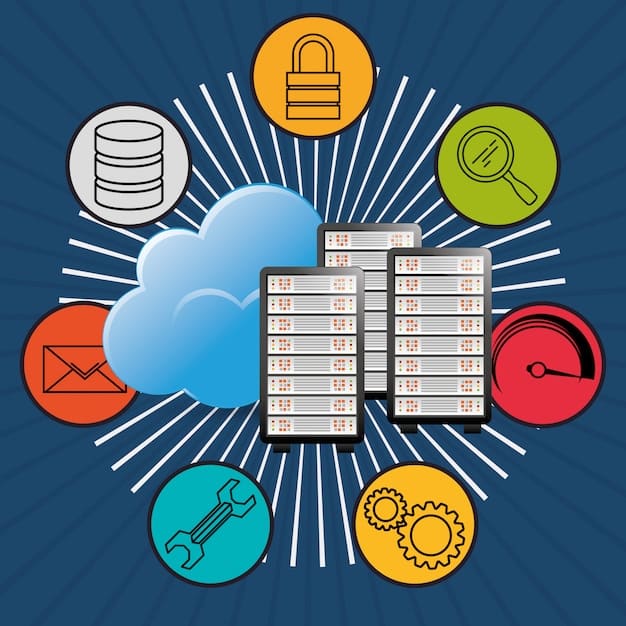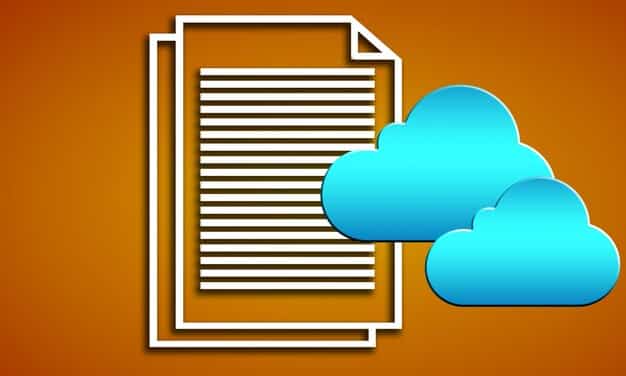Avoid Costly Mistakes: Configure Productivity Tools to Prevent Data Loss

Avoid costly mistakes by properly configuring your productivity tools to prevent data loss, ensuring business continuity and protecting valuable information.
Are you leveraging productivity tools to streamline your workflow? Are you putting your critical data at risk? Learn how to avoid costly mistakes: correctly configuring your productivity tools to prevent data loss, ensuring your business operations run smoothly and your data remains secure.
Understanding the Risks of Misconfigured Productivity Tools
Productivity tools are essential for any business, enhancing efficiency and collaboration. However, misconfigured settings can lead to significant data loss, impacting productivity and revenue. Understanding these risks is the first step toward securing your valuable information.
Common Configuration Errors
Many data loss incidents stem from simple configuration errors. Ensuring you’re aware of these common mistakes can save you a lot of trouble.
- Default Settings: Many tools come with default settings that are not optimized for data protection.
- Incorrect Permissions: Improperly set permissions can allow unauthorized access to sensitive data.
- Lack of Regular Backups: Failing to set up automated backups can result in permanent data loss in case of a system failure.
The Impact of Data Loss
Data loss isn’t just an inconvenience; it can have serious repercussions for your business.
- Financial Losses: Recovering lost data can be expensive, requiring specialized services.
- Reputational Damage: Data breaches can erode customer trust and damage your brand’s reputation.
- Productivity Downtime: Data loss halts productivity, wasting employee time and delaying project completion.
Proper configuration of productivity tools is vital. By understanding the risks and taking proactive measures, businesses can safeguard their data and ensure smooth operations.

Essential Configuration Steps for Data Loss Prevention
Configuring your productivity tools correctly can significantly reduce the risk of data loss. Here are essential steps you should take to protect your data.
Having robust configurations is essential in an increasingly threatening cyber landscape. These steps can help your business remain secure.
Implementing Strong Access Controls
Strong access controls are crucial for protecting sensitive data. Ensure only authorized personnel have access.
- Multi-Factor Authentication (MFA): Enable MFA for all user accounts. This adds an extra layer of security, making it harder for hackers to gain access, even if they have passwords.
- Role-Based Access Control (RBAC): Assign permissions based on job roles. This ensures users only have access to the data and tools they need to perform their duties.
- Regular Audits: Conduct regular audits of user permissions. This helps identify and correct any unauthorized access points.
Setting Up Data Backup and Recovery
Automated backups and effective recovery plans are essential for data protection.
- Automated Backups: Schedule automatic backups to run daily or weekly. This ensures that your data is regularly saved.
- Cloud Backups: Store backups in the cloud for easy access and redundancy. Cloud backups are less susceptible to physical damage.
- Recovery Testing: Regularly test your recovery process. This ensures that you can quickly restore data in case of an incident.
By implementing robust access controls and data backup procedures, businesses can protect their data and minimize the impact of potential data loss events.
Leveraging Versioning and Collaboration Features Safely
Versioning and collaboration features are essential for modern productivity but, if used improperly, can lead to data loss. Proper configuration is key to mitigating these risks.
Proper data versioning is key to both safety and control. Understanding that can allow your business to improve productivity and protection.
Understanding Versioning Control
Versioning control enables data restoration to a previous state and tracks changes over time.
- Enable Version History: Ensure version history is enabled to track document changes. This allows you to revert to previous versions if needed.
- Set Retention Policies: Define retention policies to manage how long versions are stored. This helps manage storage space while retaining important historical data.
- Educate Users: Train users to properly use versioning features. Ensure they understand how to save and revert to different versions.
Safe Collaboration Practices
Collaborative editing can be risky if not managed correctly. Implementing safe collaborative practices is crucial.
- Controlled Sharing: Share documents with specific users or groups, rather than making them public. This helps prevent unauthorized access to sensitive information.
- Review Permissions: Regularly review and update sharing permissions. Ensure permissions are still relevant and necessary.
- Watermarking: Use watermarks to identify the document’s sensitivity. This can help prevent accidental sharing of confidential information.
Leveraging versioning and collaboration features safely is essential for maintaining data integrity and preventing loss. By following these guidelines, you can ensure that your productivity tools enhance rather than compromise your data security.

Configuring Cloud Storage for Optimal Data Protection
Cloud storage is a cornerstone of modern productivity. Configuring cloud storage correctly is vital for data protection, especially given increasing cybersecurity threats.
Many businesses depend on cloud storage to safely keep data. If you implement the correct protections, you can minimize data loss.
Sync and Share Settings
Managing sync and share settings is essential for data protection.
- Selective Sync: Choose which folders to sync to local devices. This prevents unnecessary data from being stored locally, reducing the risk of data loss from device theft.
- Limit Sharing Permissions: Restrict who can share files externally. This minimizes the risk of accidental data leaks.
- Review Shared Links: Regularly review and revoke shared links. This ensures shared files are only accessible to authorized users.
Security Features in Cloud Storage
Utilizing the security features provided by cloud storage platforms is crucial for protecting your data.
- Encryption: Enable encryption for data at rest and in transit. This protects data from unauthorized access, even if it’s intercepted.
- Activity Monitoring: Monitor user activity for suspicious behavior. This allows you to detect and respond to potential security threats quickly.
- Data Loss Prevention (DLP): Implement DLP rules to prevent sensitive data from leaving the cloud. This helps ensure confidential information is not accidentally shared or leaked.
Configuring cloud storage settings correctly can significantly enhance data protection. By managing sync and share settings and leveraging security features, you can ensure data remains secure and accessible.
Training and Policies: Building a Culture of Data Security
Technical configurations are not enough; you need a culture of data security. Training and clear policies are essential for ensuring that everyone in your organization understands and follows best practices.
Cybersecurity is an ever-evolving field. It’s key to educate yourself and your team often to prevent accidents.
Developing Comprehensive Training Programs
Training programs are essential for educating employees on data security best practices.
- Regular Training Sessions: Conduct regular training sessions on data security. Discuss topics such as phishing, password security, and data handling.
- Simulated Phishing Attacks: Use simulated phishing attacks to test employee awareness. This helps identify vulnerabilities and improve responses to real attacks.
- Hands-On Workshops: Provide hands-on workshops on tool configurations. This ensures employees understand how to use security features.
Creating Clear Data Security Policies
Clear and comprehensive data security policies are essential for providing guidance and setting expectations.
- Data Handling Guidelines: Define rules for handling sensitive data. This includes guidelines for storing, sharing, and disposing of data.
- Incident Response Plan: Develop an incident response plan. This includes steps to take when data loss or breaches occur.
- Policy Enforcement: Enforce data security policies consistently. This ensures all employees adhere to the rules and understand the consequences of non-compliance.
Building a culture of data security requires ongoing training and clear policies. By investing in these areas, businesses can empower employees to protect data and minimize the risk of data loss.
Auditing and Monitoring Tools for Ongoing Data Protection
Ongoing data protection requires regular auditing and monitoring of your productivity tools. These practices ensure that configurations remain secure and data is protected over time.
It’s not enough to setup your data protection once. You need continuous monitoring, so you can detect and address issues accordingly.
Regular Security Audits
Regular security audits are vital for identifying vulnerabilities and ensuring ongoing compliance.
- Internal Audits: Conduct internal audits of tool configurations. Review settings for security, access controls, and compliance requirements.
- External Audits: Hire external experts for independent security evaluations. This can provide a fresh perspective and identify blind spots.
- Compliance Checks: Ensure tools comply with industry regulations. This helps avoid legal and financial penalties.
Monitoring Data Loss Prevention Systems
Data Loss Prevention (DLP) systems require continuous monitoring to be effective. This ensures that sensitive data remains protected at all times.
- Real-Time Monitoring: Monitor DLP alerts in real-time. Respond quickly to identified incidents.
- Trend Analysis: Analyze trends in DLP data. This can help identify patterns and potential security gaps.
- Regular Updates: Keep DLP rules up to date. This ensures they remain effective against evolving threats.
Auditing and monitoring tools are essential for ongoing data protection. By conducting regular security audits and monitoring DLP systems, businesses can ensure that their productivity tools remain secure and data is protected over time, reducing the likelihood of costly data loss incidents. Regular review is absolutely necessary for the evolving cyber landscape.
| Key Point | Brief Description |
|---|---|
| 🛡️ Strong Access Controls | Implement MFA and RBAC to restrict data access. |
| 💾 Data Backup & Recovery | Automate backups and test recovery processes regularly. |
| 🔄 Versioning Control | Enable version history and set retention policies. |
| 🔒 Cloud Security | Configure sync settings and use cloud security features |
Frequently Asked Questions
▼
Proper configuration prevents data loss due to unauthorized access or system failures, ensuring business continuity and regulatory compliance.
▼
Common mistakes include giving excessive access rights, neglecting multi-factor authentication, and not regularly auditing user permissions.
▼
Data should be backed up regularly, ideally daily or weekly, depending on the frequency of data changes and the criticality of the information.
▼
Start with comprehensive training programs, clear data handling policies, consistent enforcement, and simulated phishing attacks to test awareness.
▼
Monitor alerts in real-time, analyze trends and implement new rules to enhance your systems, and regularly check compliance, with consistent data.
Conclusion
Properly configuring your productivity tools is essential for preventing data loss and ensuring your business remains secure and efficient. By implementing strong access controls, establishing solid backup and recovery plans, and fostering a culture of data security, you can protect your valuable information and avoid costly mistakes.





